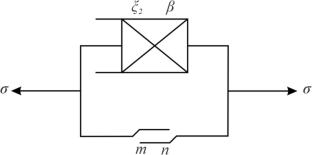Study on creep constitutive model of loess considering hardening and damage effects
Abstract
Creep deformation of loess will directly affect the long-term safety and stability of loess engineering. The creep deformation characteristics of loess under different confining pressures and loading levels were investigated by performing graded loading and unloading triaxial creep tests in order to study the creep characteristics of loess in depth. Test results show that under similar loading conditions, higher confining pressure reduces creep. Only decelerated creep occurs in loess at low and medium stress. Decelerated, steady, and accelerated creep occur in loess at high stress. The creep mechanism of loess was analysed according to the mechanical response characteristics of loess to creep loading and the microstructural evolution characteristics of typical loess creep. The creep mechanism of loess is that the creep of loess is a result of the combined effect of compression hardening and structural damage. Finally, based on Norton's creep power law and continuous damage mechanics, a new loess creep constitutive model considering hardening and damage effects is proposed. The validity and reasonability of the proposed model is verified by fitting the theoretical model to the creep test data. The research results contribute to a better understanding of the creep properties of loess. They are of great practical value for solving loess rheological problems in practical engineering.



 求助内容:
求助内容: 应助结果提醒方式:
应助结果提醒方式:


